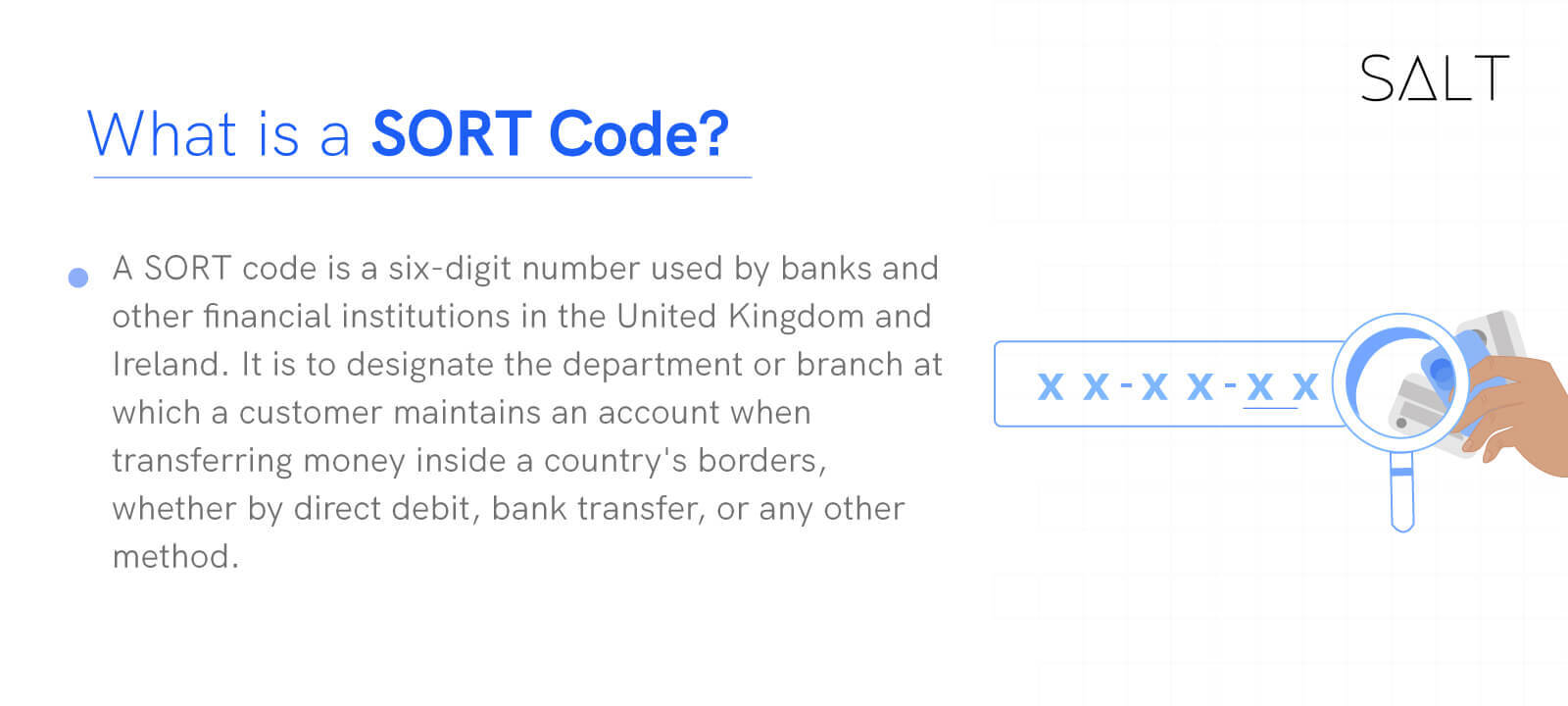The very first thing to talk about is what is a sort code on a card. When opening a bank account in the United Kingdom or Ireland, you will be provided with more than simply a number. In addition, you will be given a bank SORT code, which is required for certain types of financial transactions in the United Kingdom. You must provide your SORT code to receive funds when you provide your bank account information. These SORT codes are used by everyone, but are you familiar with their inner workings?

What exactly are SORT codes, and how do you find yours? Let's investigate the solutions. To he lp you better comprehend your financial dealings, we will examine what SORT codes are, why you need them, and how you may locate your own.
What is a SORT code in banking?

So, what is a SORT code in banking? A SORT code is a six-digit number used by banks and other financial institutions in the United Kingdom and Ireland. It is to designate the department or branch at which a customer maintains an account when transferring money inside a country's borders, whether by direct debit, bank transfer, or any other method.
In the United Kingdom, a SORT code may be found at the bottom of a check, in a bank's web portal, on a bank statement, or in other official correspondences. If you or your company wish to receive money from another source, you'll need to provide them with your SORT code and account number.
Although these numbers are included in SWIFT, IBAN, and other international banking IDs, SORT codes may also be used to identify British banks and financial institutions for international currency conversion. A SORT code is unnecessary in most cases if you specify one of these integers.
A SORT code and account number are required for most international direct bank transfers from a UK or Irish bank. SORT codes are made up of six digits, written as three sets of two. The first digit or two represent the financial institution, while the remaining numbers designate the particular office or department where a customer maintains an account.
History of the SORT Code
In the late 20th century, when the popularity of checks was at an all-time high, banks began using SORT codes. Customers made purchases all day long by writing cheques and handing them to store clerks. If the cheques were written to a business, the owner or manager of that store would have to deposit them. This was accomplished by having checks brought to the bank for processing, which necessitated the development of systems to verify the checks' legitimacy.
The account holder's branch of the bank from which the checks were written was denoted by the SORT code, which made it possible for all parties engaged in the wire procedure to trace the origin and destination of the funds.
Working of a SORT Code
Most online and mobile banking platforms, as well as paper statements, will display your bank account number. The account number for your bank card may usually be found either on the front or back of the card. This is different from the 16-digit number on the card, typically located in the card's centre.
A SORT code is a series of four digits that, when read as a whole, denotes a separate piece of data necessary for completing a financial transaction. The first two numbers indicate the financial institution or organisation that issued the cheque. We may zero in on a particular tree branch with the remaining numbers.
Although SORT codes and account numbers are often used together, they serve distinct purposes. The account number is the unique identifier for a person's checking or savings account. A SORT code ensures the proper transfer of funds from one bank account to another, regardless of the nature of the transaction.
How to find a Bank SORT code?
If you are wondering how to find a bank SORT code, it should be easy if you have a bank account. It appears on your bank statement, your checks, and often on any communication from your bank.
You may get your SORT code from your online bank account quickly, easily, and securely. Copy the number shown on the screen and your account number from your online account, and paste it when required. There will be no room for error in recording the figures if you do it this way.
SORT codes Vs. International bank account numbers
SORT codes are used to identify a particular bank in the United Kingdom. Neither the SORT code nor the SWIFT code can tell authorities anything more than the general account number associated with a transaction.
In addition to a domestic account number, many financial institutions call for an IBAN (IBAN). International Bank Account Numbers (IBANs) may be used to locate individual bank accounts. An International Bank Account Number (IBAN), which may be up to 34 characters in length, may be required for some international wire transactions.
Conclusion
We do hope this post has answered your questions, “What is a SORT code in banking?” Local transfers in the UK and Ireland need the SORT code and account number. Many nations have abandoned their domestic systems in favour of the international standard, and the UK is likely to follow suit. It is usually safe to share such information with individuals you know or businesses you intend to make payments. However, disclosing such information to people you do not know or companies you do not want to make or receive payments from is not a good idea.
Want to participate in global business with the convenience of local bank accounts? Give our website a visit today to find out how!


